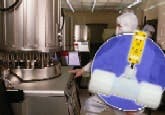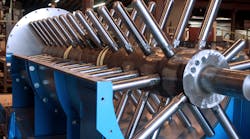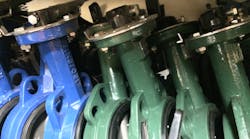A new design of thermocouple assembly from the Partek division of Parker Hannifin provides a reliable temperature monitoring sensor for high-purity fluid systems that traditionally use fluoropolymer components.
The sensor assembly overcomes perceived weaknesses with current thermocouple sensors that potentially reduce long-term stability, and is expected to deliver considerable cost savings to users over its lifetime.
Designated the TS Series, the assembly has been designed as an alternative to sensors for high-purity flow systems that are fabricated by bonding the thermocouple wires between fluoropolymer tubing elements, a form of installation often carried out by end users. From analysis of failed parts used in this type of installation, Partek found that the bonding temperature can damage the wires' insulation. Such damage creates a wicking path for the flow media that leads to eventual failure of the wiring. When the sensors are used in clean room environments, the related downtime costs associated with diagnosing and fixing any such failure can be extremely high.
On Partek's TS sensor, the tip itself is also sealed with fluoropolymer for protection and long life, and has minimal dead space and entrapment areas. A TS Series sensor can be specified with either a K- or J-type thermocouple probe. Mounting for the sensor is provided in the form of a 'T' shaped PFA fitting that can be installed into fluid lines to function as a straight union, or a 90-degree elbow joint. The sensor element is installed into one leg of the T assembly, using a standard PFA compression ferrule set. The thermocouple is available for five tubing diameter sizes from 1/4 to 1 inch, or in a 'jump size converter' configuration.
By packaging the thermocouple inside a standard tube fitting shape, installation can be performed in as little as 5 minutes. By contrast, bonding a thermocouple inside tubing can take 30 minutes or more. Similar time savings are possible if maintenance is required, allowing change-outs to be performed in minutes.
The new probe design has been put through an extensive program of tests to verify reliability and accuracy. Using de-ionized water and clean dry air as media, the tests include measurement accuracy and repeatability against a traceable thermometer, pullout tests designed to check the strength of the probe mounting (with no leaks observed at 700 PSIG/48 bar), and immersion in hydrochloric acid for 35 days (without affecting temperature reading performance or the insulation).





